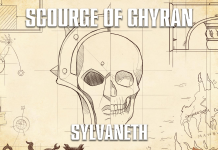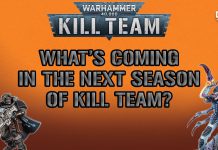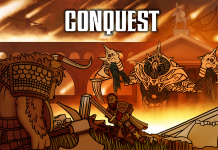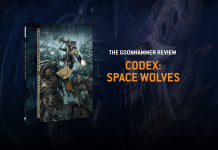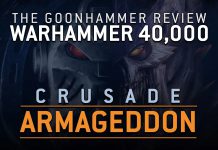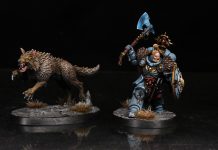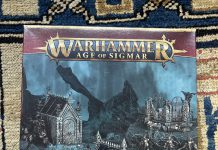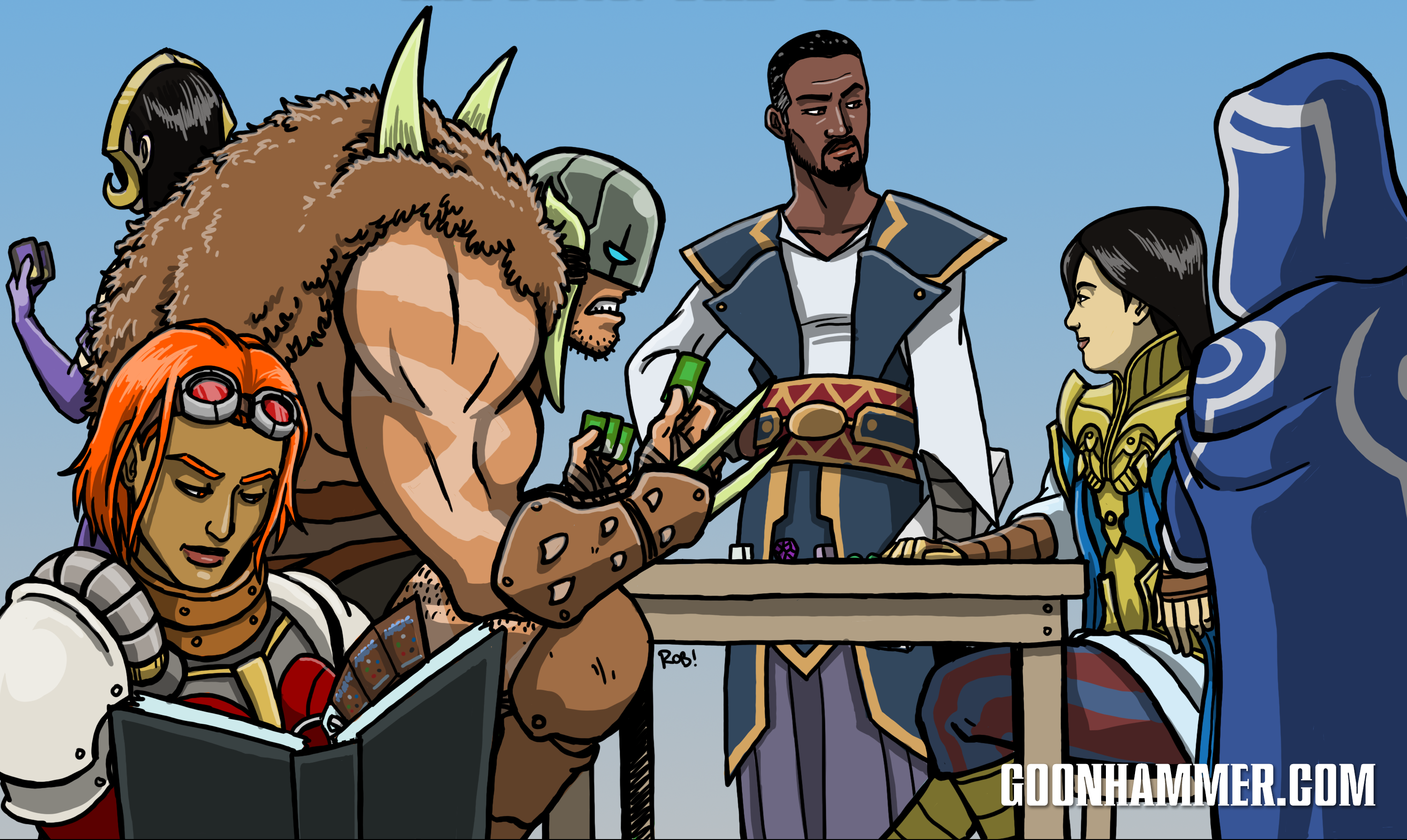Game design for tabletop games, specifically card games, can be a delicate balancing act of many factors in order to get the play experience to be enjoyable and enlightening. Two of these factors that often come up frequently are mechanics and flavor, which are arguably the two most important aspects for a game where all of the pieces are on individual cards, and there are no true outside parts of game, like a board or miniatures.
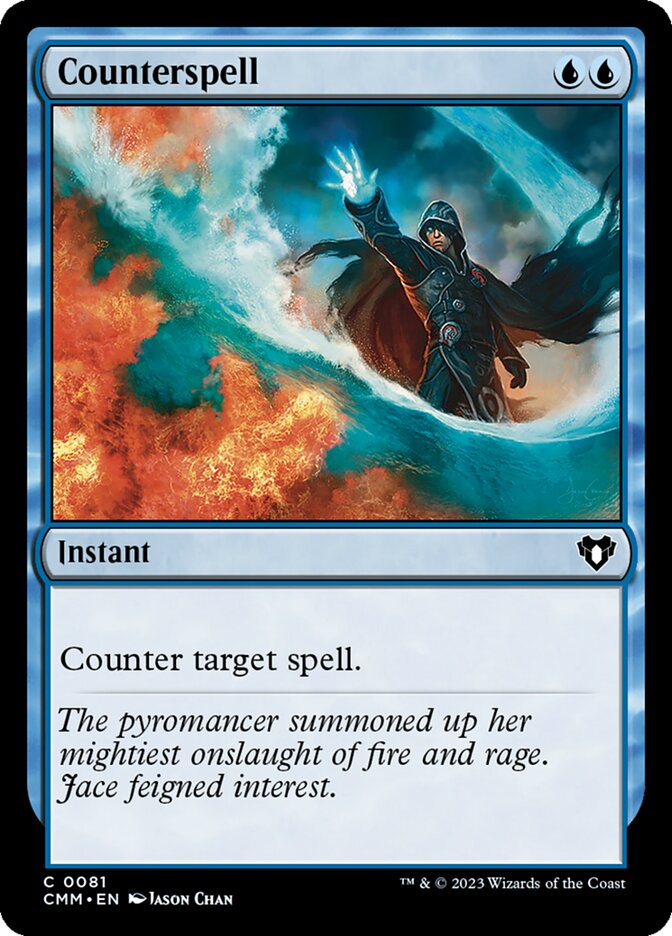
When you see a Magic card, you really can break all of the aspects of it down in to those two categories. Things like the converted mana cost, the card type (“Instant”), the oracle or rules text, and the card information at the bottom are all designed for you, a player/collector, to be able to interact with the card in a practical way. On the flip side of this, things like the card art and the flavor text help embody the “feel” of the game – they realistically provide nothing to the actual rules of the game besides giving a unique way to tell cards apart, but they establish what Magic is meant to evoke: this power fantasy of a sort of “wizard duel” between two masters of the craft, digging deep into their tomes in a battle of strength and wit. The title of the card often blends both together; it gives you an idea of what the intent of the card is from an in-universe perspective, but should also give the player an idea of what the card may do in their game of fancy cardboard squares.
To get to the point; the goal of a game like Magic isn’t really “immersion” in the sense you might get when watching an engrossing film or playing a deep, story driven video game, but is to embody the balance of game design where things just make sense when you look at a card: if I read a title and see the art of a card, before even reading the rules text it should make sense what the card might do, and conversely the rules of a card should be supported by the style and flavor of the card.
Today, I want to highlight what I believe is one of the most successful uses of this in Magic’s history. While there are many great examples of this design philosophy in Magic’s rich past, we must travel back to a beloved Plane for today’s discussion: Ravnica.
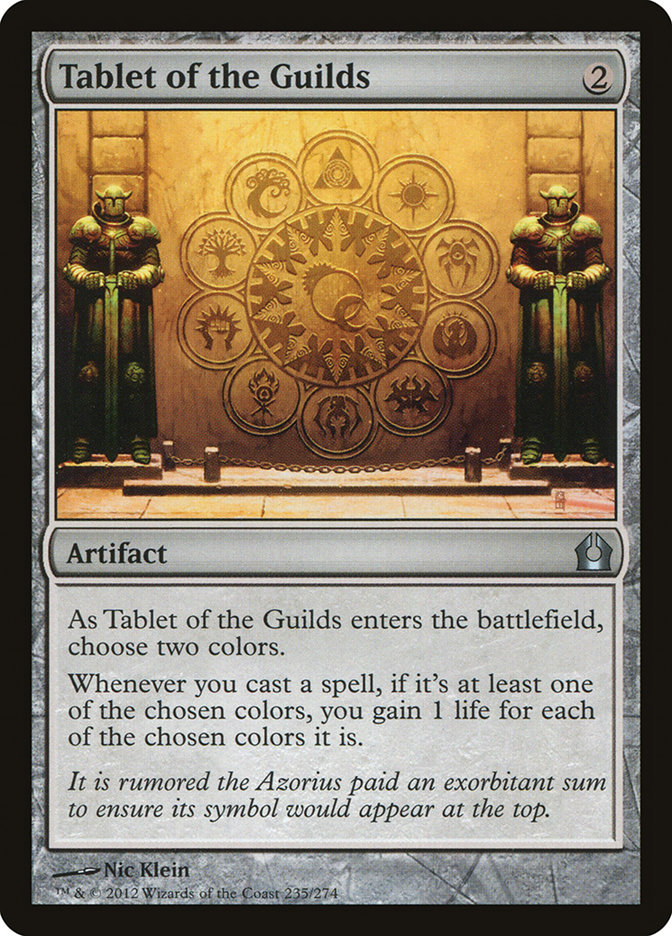
For those who are either newer to the game, or just didn’t experience these sets during their releases, Ravnica is arguably one of the most popular Planes visited in the game; there’s a good reason we’ve been back there on 5-6 occasions now. To keep things brief, Ravnica is a massive, Plane-wide city divided among 10 “guilds” which hold a sort of social order and balance of power among the society. Each of these guilds is represented by a pairing of two mana colors, and additionally each is represented by a consistent theme and art direction as well as unique gameplay mechanics to support this. While I could write for hours about each of these in detail, today we want to focus on one specifically: the Golgari Swarm.

The Golgari are represented by the combination of Black/Green, and thematically embody the balance between life and death – decay and regrowth. They exist within the underway and forgotten corridors of Ravnica’s bowels, with many groups within the Golgari acting towards their own unique agendas. They don’t see death as an end of life, but merely an intermediate state between birth and rebirth. Due to these factors, their visual themes are represented by a unique balance of traditional undead and bestial, natural, bug-like creatures and décor.
Golgari have been featured as a main focal point across three different sets/blocks: Ravnica: City of Guilds; Return to Ravnica; and Guilds of Ravnica (outstandingly unique names, I know). Each of these sets fostered a new mechanic for the guild while always keeping to the roots of the core concept of what the guild embodies: death, decay, life, and regrowth.
Ravnica: City of Guilds: Dredge
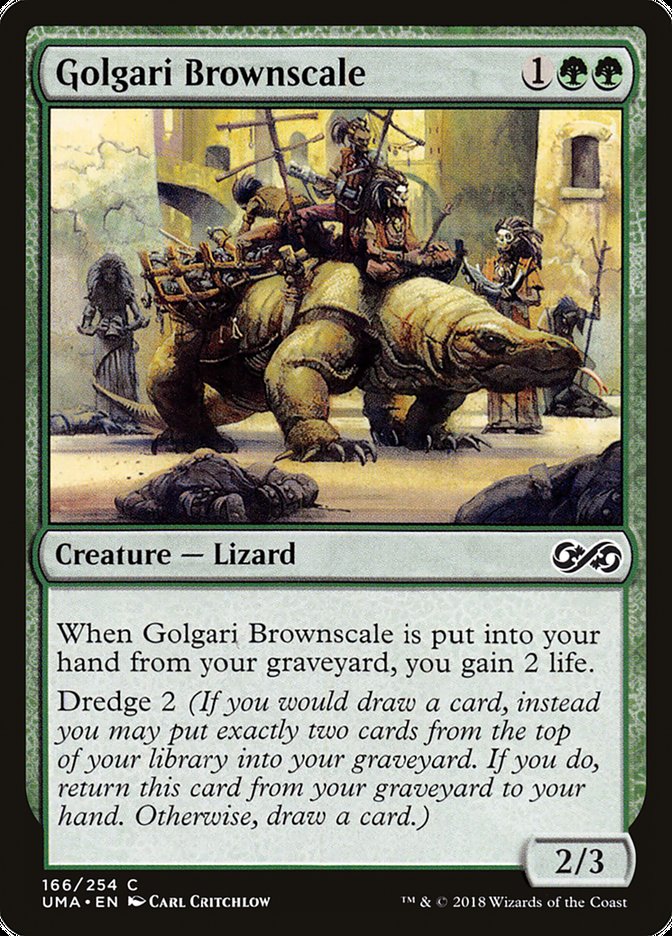
Dredge is the initial mechanic introduced for the Golgari in their first feature set, and arguably it’s their most timeless one. If a card with Dredge is in your graveyard, the ability allows you to forgo drawing a card to instead mill a number of cards equal to its Dredge value and then return that card to your hand instead of taking a card from the top of your deck. Functionally, this does two things particularly well: First, it allows you to recur specific cards to your hand, effectively giving you more value from card selection and reusable effects. Second, it allows you to easily and reliably fill your graveyard with cards, provided you have a way to put your Dredge cards in the bin consistently.
Thematically, this is a beautiful way to represent all of the themes we discussed earlier. Golgari synergizing with various effects across the graveyard is a great way to easily represent their theme in a way that makes sense to the player and isn’t overly convoluted. Dredge allowing you to sort of “cheat” your way into having more cards in your graveyard to utilize helps assist in these strategies, while the Dredge card returning to your hand represents its rebirth after “death.”
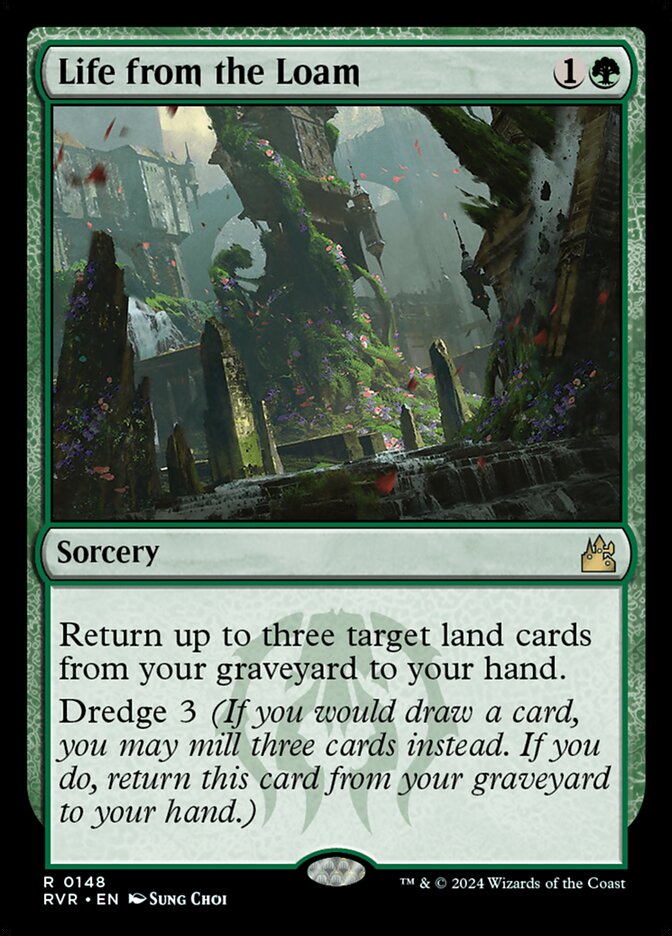
Dredge has been featured across 15 cards since its initial printings, including the recent The Necrobloom as new as Modern Horizons 3. Famously popular Dredge cards are Life from the Loam, Golgari Grave-Troll, Golgari Thug, and Stinkweed Imp, all of which are easy to get into your graveyard and have high Dredge value associated with them. Dredge has been historically a powerhouse in both Standard and Modern formats, including necessitating an emergency ban of Hogaak, Arisen Necropolis after the infamous Hogaak Summer, with it still representing a portion of the Modern metagame today. It is also a staple mechanic of many graveyard focused strategies in Commander. Dakmor Salvage is also a key staple in The Gitrog Monster, a potent high power Commander combo deck.
Return to Ravnica: Scavenge
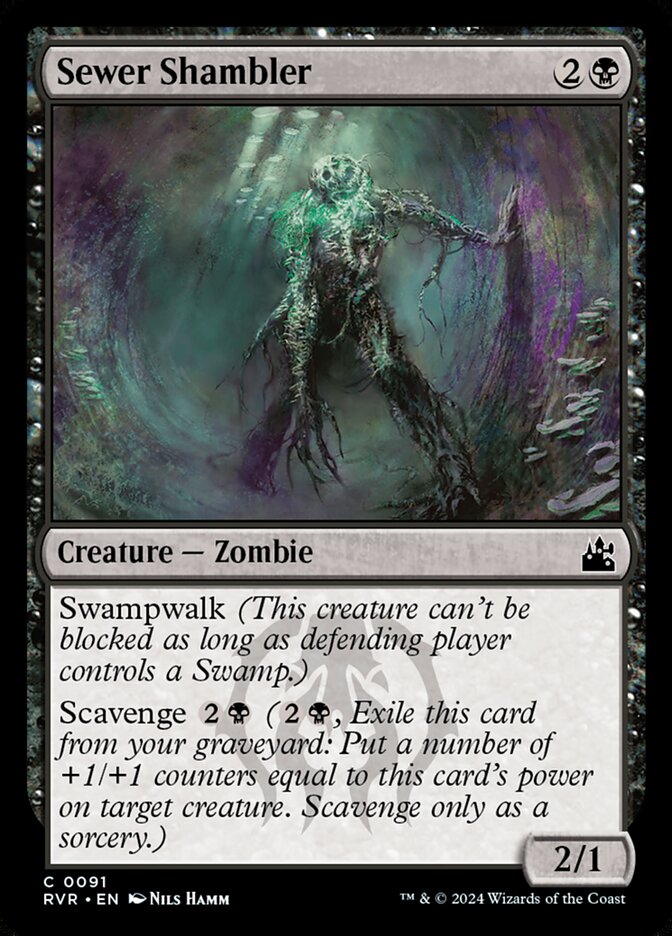
Scavenge takes a slightly different approach to Dredge thematically: instead of taking advantage of “dead and decaying” cards by having them come back to use again, Scavenge is more about getting extra benefits from things already passed by. It allows you to pay mana equal to its Scavenge cost and exile it from your graveyard to add counters to any creature equal to the Scavenged creature’s power. Interestingly, this means Scavenge has to be tied to a creature, unlike the effects of Dredge. It’s a much simpler ability, giving you an easy payoff for trading with early creatures and using their Scavenge ability to juice up your bigger threats later on.
While it saw play in Standard when it released, Scavenge hasn’t seen a ton of constructed play outside of Commander due to it being very vulnerable to fast strategies and having a relatively narrow payoff for the average mana costs. There are 16 cards that have been printed with Scavenge as a keyword, but there are other cards like Scavenged Brawler that have thematically and mechanically similar abilities. It also made a comeback in the recent Fallout Commander decks, where it was used to represent Deathclaws and some of the other natural beasties of the wasteland.
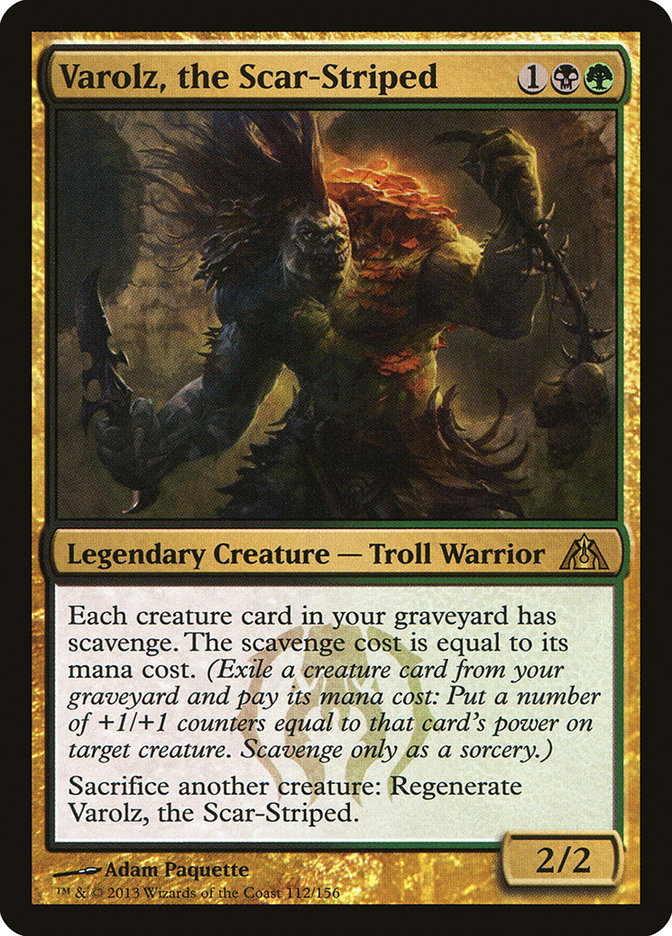
While not the most popular mechanic represented today, Scavenge can still be seen at some cEDH tables, with decks helmed by Varolz, the Scar-Striped to enable Protean Hulk combo decks with high resilience and a free sacrifice outlet, making him stand out to other Hulk decks in the format.
Guilds of Ravnica: Undergrowth
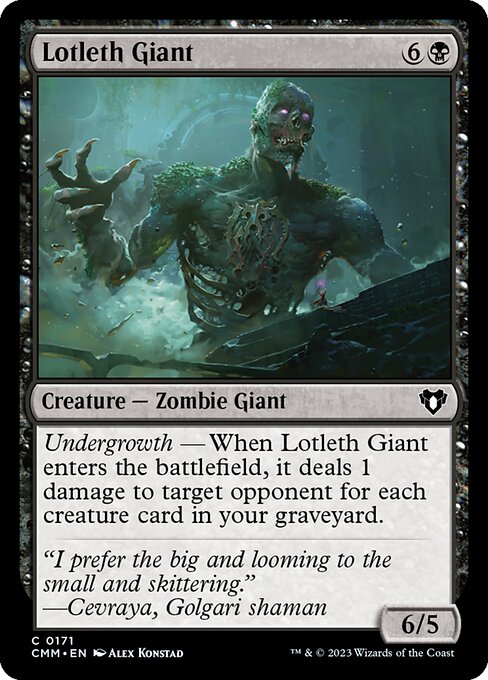
Undergrowth, introduced in the most recent Ravnica set with Guilds featured, has a lot of beauty in its simplicity. Fundamentally, it’s a much more open-ended mechanic than those previously introduced: Undergrowth abilities all care about the number of creature cards in your graveyard. The actual effects vary from card to card, but it ended up taking an interesting approach to these keywords that the previous abilities lacked. Since Undergrowth was more of a “criteria” for an ability rather than an actual proactively used effect, it meant that the abilities these cards had could differ drastically while still keeping the same theme and general goal of how you wanted to use them.
Thematically, it slotted well into this niche of “Graveyard Golgari” that had been carved out over the years, and it focused on a different aspect of their theme than the previous abilities. While Dredge really wanted you to recur the card back to your hand (“rebirth”) and Scavenge wanted you to make use of things from beyond the grave as they expire (“decay”), Undergrowth really focuses on accumulating a mass of decaying things, but keeping them there rather than expending them like the other effects. It gives a feel of an accumulating threat or a sort of rolling boulder-effect, which allows for a much different playstyle when isolated from the other mechanics, yet synergizes really well with Dredge.
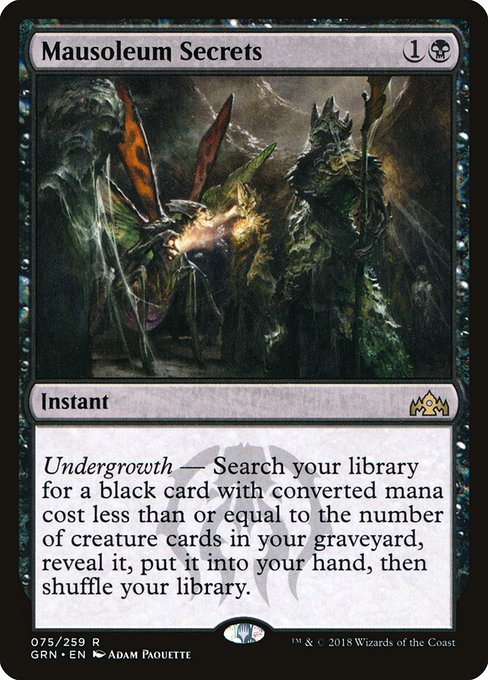
Undergrowth has been featured on 13 cards, and due to the varying differences in their effects, the levels of play each card has seen are vastly different, making it hard to analyze the keyword as a whole. Due to the high amount of value many of the cards provided however, many of them were fantastic in limited formats, like Molderhulk and Necrotic Wound. Izoni, Thousand Eyed is a useful Commander tool as well, on top of the raw power of a cheap instant speed tutor from Mausoleum Secrets.
Conclusions
If you’ve read this far, you might be wondering, “What was the point of this?” In truth, there isn’t really one. Magic has had a lot of strife recently; across the various sub-communities within the game, there has been an overwhelming amount of news that has prompted contentious feedback and discourse within the player base as a whole. After digesting a lot of this for some time now, it made me want to step back and look at some of the things that make Magic, well, magical for me. We fall in love with games for many reasons, but Magic has historically struck a beautiful harmony between form and function in their game. While not every set and theme can achieve this to an equal level, it’s all part of what makes Magic feel so fun – the expectation that casting your spells (flinging those cardboard wizards squares) feels like how casting a spell in a strategy game should, and that mechanics and flavor represent each other in a symbiotic way.
Have any questions or feedback? Drop us a note in the comments below or email us at contact@goonhammer.com. Want articles like this linked in your inbox every Monday morning? Sign up for our newsletter. And don’t forget that you can support us on Patreon for backer rewards like early video content, Administratum access, an ad-free experience on our website and more.

![[40k] Competitive Innovations in 10th: Death Beckons pt.1](https://d1w82usnq70pt2.cloudfront.net/wp-content/uploads/2020/01/Analysis_Banner.png)
